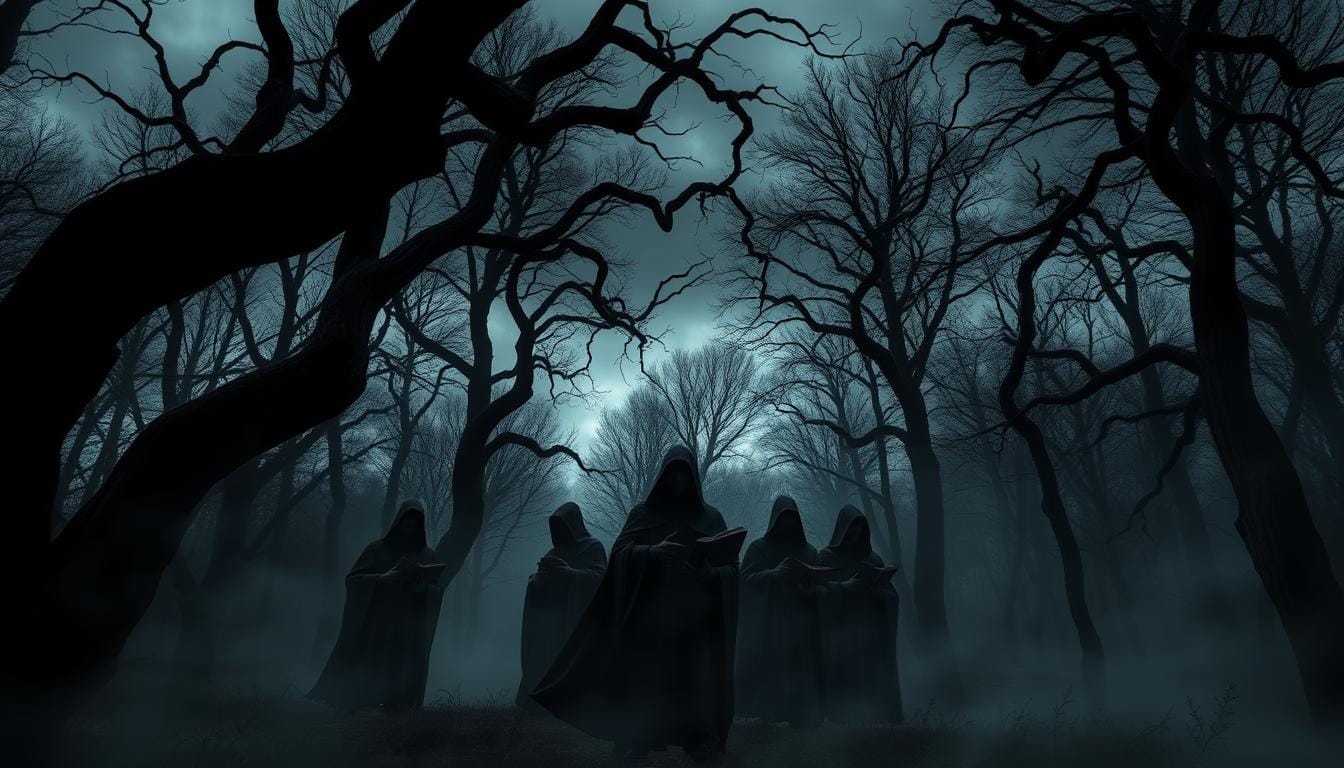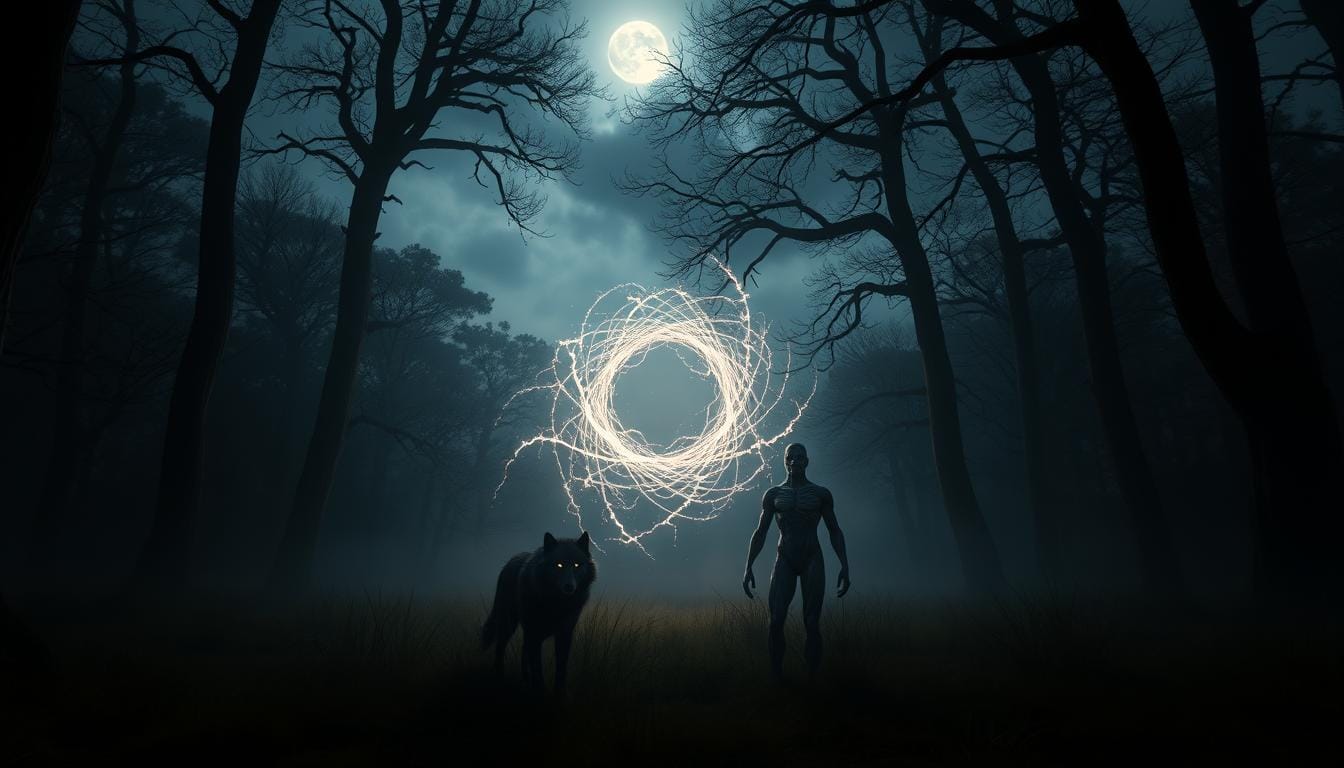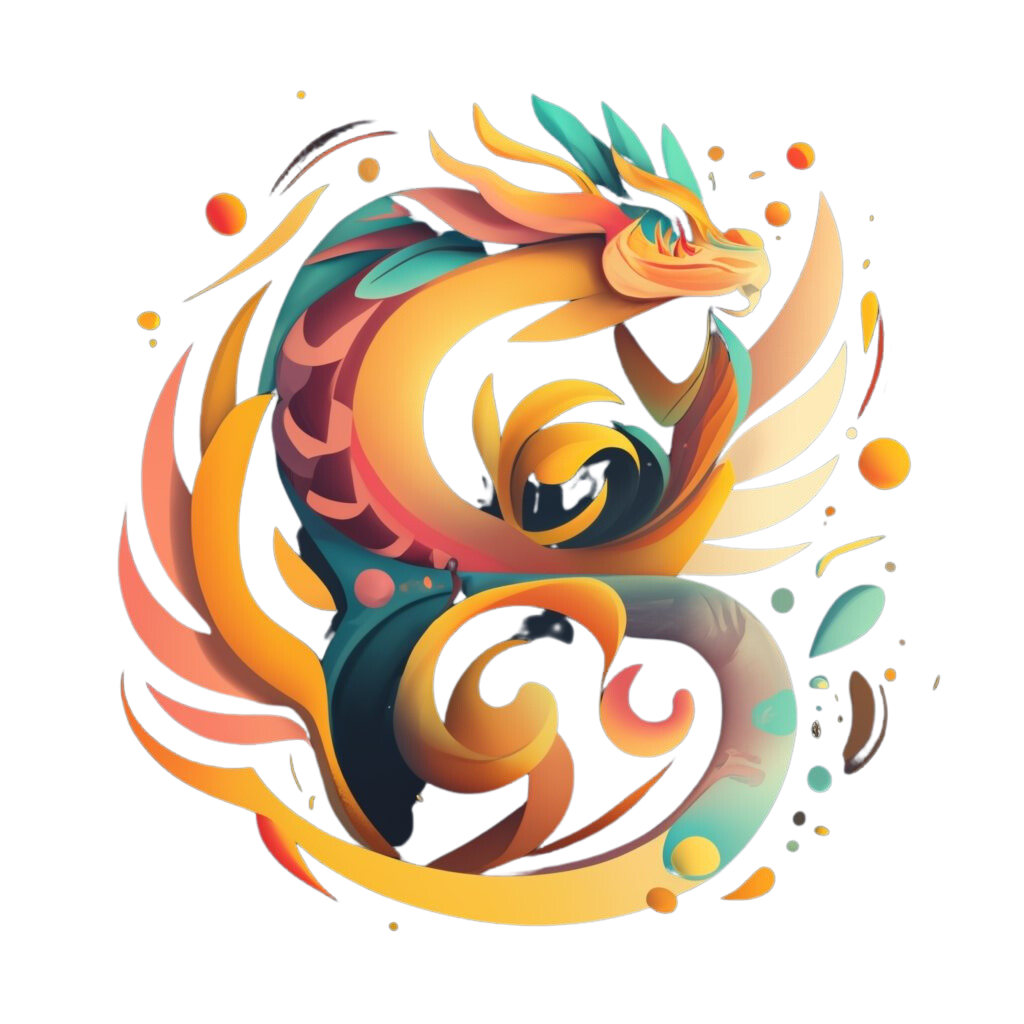Celtic mythical creatures have been part of folklore for centuries. They have captured the imagination of people worldwide. Creatures like the Fear Gorta and the Dullahan are key parts of our cultural heritage.
The Celtic folklore world is full of diverse creatures. You'll find the Fomorians, Fairies, Kelpies, Merrow, Pooka, and many more. Each has its own story and traits.
In Celtic folklore, creatures like Balor of the Evil Eye and the banshee evoke fear. The Fear Gorta is said to bring famine and death. These stories have been passed down through generations, captivating us all.
The Celtic folklore world is rich and fascinating. It's filled with creatures like Fairies and shape-shifting Kelpies. Each has its own story and importance in folklore.
The creatures of Celtic folklore, like the Fomorians, are a big part of our culture. They are often linked with the banshee and Fear Gorta.
Key Takeaways
- Celtic mythical creatures have been a part of folklore for centuries, and include creatures like the Fomorians and Fairies.
- These creatures have become an integral part of our cultural heritage, and are often associated with celtic mythical creatures and folklore.
- The world of Celtic folklore is home to a diverse array of creatures, including the Kelpies, Merrow, and Pooka.
- Creatures like Balor of the Evil Eye and the banshee have become synonymous with fear and superstition in the world of celtic mythical creatures and folklore.
- The stories of these creatures continue to fascinate us, and have become an essential part of our shared cultural heritage, and are often associated with the fear gorta and banshee.
- Celtic folklore is a complex and fascinating topic, full of creatures that continue to capture our imagination, including the leprechaun and aos sí.
- The celtic mythical creatures, and the folklore surrounding them, have become an integral part of our cultural heritage, and are often associated with the sluagh and other creatures from celtic mythology.
The Rich Tapestry of Celtic Mythical Creatures
Celtic mythology has fascinated people for centuries. The ancient Celtic culture was full of folklore. It had many mythical creatures that were key in their stories.
Christianity's influence on Celtic mythology is big. It has shaped how we see these creatures today.
At the heart of Celtic mythology are the regional variations. These make each culture special. Creatures like the Fomorians and the Dullahan show Celtic folklore's diversity.
The Fomorians were seen as giants or monsters. The Dullahan was a sign of death.
Some key aspects of Celtic mythology include:
- Origins in ancient Celtic culture, with a strong emphasis on nature and the supernatural
- The influence of Christianity, which has shaped the way these creatures are perceived and understood today
- Regional variations, which reflect the diversity and complexity of Celtic folklore
Exploring Celtic mythical creatures helps us understand ancient Celtic culture. From the Fomorians to the Dullahan, these creatures inspire us. They give us a peek into a magical world.
Fearsome Giants and Ancient Races
Celtic mythology is full of interesting creatures. These include giants and ancient races that once lived on land. The fomorians were ancient sea raiders known for attacking coastal towns.
They were seen as monstrous, with sharp teeth and glowing eyes. This made people very scared of them.
Balor of the Evil Eye was a famous leader of the fomorians. He had a deadly gaze that could kill with one look. His evil eye was so powerful it could destroy armies.
The fomorians, led by Balor, were very powerful. Their stories are a big part of Celtic folklore.
Celtic mythology also talks about the changeling and the kelpie. These beings were linked to nature and had magical powers. The kelpie could change into a horse or a human.
Some key traits of these ancient beings include:
- Supernatural strength and agility
- Magical powers and shape-shifting abilities
- Association with the natural world and the forces of nature
These creatures are very interesting and inspire many stories and art. By learning about the fomorians, Balor, and others, we can understand Celtic culture better. We see how their legends are powerful and lasting.
The Solitary and Social Fairies

In Celtic mythology, fairies are very interesting and varied. The aos sí are linked to the land and ancestors' spirits. They are kind but also protect their places fiercely.
Leprechauns and clurichauns are known for being playful and tricky. Leprechauns are famous for their gold and wishes for the kind. Clurichauns are small, playful fairies that like to play tricks.
Understanding the Different Types of Fairies
The far darrig and púca are also important. The far darrig is bad and brings sickness and death. The púca can change shape, like a horse or cat.
These fairies, including the merrow, a water spirit, make Celtic mythology rich. They make Celtic stories more interesting and are loved by many.
The Role of Fairies in Celtic Folklore
Fairies in Celtic folklore are tied to nature and its cycles. They can control nature, like the seasons. The aos sí help plants grow and die, and leprechauns control the weather.
Fairies in Celtic mythology are complex and interesting. They make Celtic stories richer and continue to fascinate people everywhere.
Dark Harbingers and Death Omens

In Celtic mythology, dark harbingers and death omens were key in predicting fate. They were seen as having the power to foresee and shape events.
The banshee, a female spirit, was famous for her wails. These were signs of a family member's death. The banshee was tied to specific families, making her a bad omen.
The fear gorta was another death omen. It was believed to signal famine or disease. This spirit was thin and gaunt, warning of hard times ahead.
These dark harbingers and death omens were central to Celtic mythology. They showed the mysterious and scary side of the supernatural. Learning about them helps us appreciate Celtic culture more.
Water Spirits and Sea Dwellers
Celtic mythology is full of stories about water spirits and sea dwellers. Each has its own special traits and roles in the folklore. These beings live in the oceans, lakes, and rivers of the Celtic world. They are linked to nature and the forces of nature.
Kelpies and Merrow
The kelpies are water horses that can change shape. They live in Scotland and Ireland's rivers and streams. They are known for being mischievous and sometimes mean.
The merrow, on the other hand, are the Irish merfolk. They are kind and love music and dance.
The Muckie and Oilliphéist
The muckie guards lakes and pools. It has the power to control water and its creatures. The oilliphéist is a sea serpent that lives in the Celtic world's oceans and seas. It's powerful and scary, linked to nature and the sea's power.
Some examples of water spirits and sea dwellers include:
- Kelpies: shape-shifting water horses
- Merrow: Irish merfolk
- Muckie: guardian of lakes and pools
- Oilliphéist: sea serpent

Supernatural Shapeshifters and Changelings
Celtic mythology is full of interesting creatures. These include supernatural shapeshifters and changelings. They can change into different forms, like animals or other humans. The púca and far darrig are two famous ones in Celtic stories.
These beings are linked to the spirit world and have magical powers. The púca is known for being playful and can look like a horse, cat, or human. The far darrig is small and ugly, but loves to cause trouble.
Some common traits of these creatures are:
- Ability to transform into various forms
- Association with the spirit world
- Magical powers
- Mischievous or trickster-like behavior
Supernatural shapeshifters and changelings, like the púca and far darrig, are key in Celtic myths. They symbolize change and transformation. Learning about these creatures helps us understand Celtic culture and history better.

Malevolent Beings of Celtic Lore
Celtic mythology is full of scary beings. They are linked to darkness, evil, and chaos. The dullahan, a headless horseman, looks for souls. The abhartach, a Celtic vampire, drinks the blood of the living.
The sluagh and bánánach are also part of Celtic lore. The sluagh are spirits of the dead. The bánánach is an Irish demon that brings fear and despair.
- Association with darkness and evil
- Ability to inspire fear and dread
- Often seen as harbingers of doom and destruction
- Can take many forms, such as spirits, demons, or supernatural creatures
These beings are key in Celtic mythology. They remind us of life's dangers and uncertainties. By learning about them, we appreciate Celtic folklore more.
The Impact of Celtic Mythical Creatures on Modern Culture
Celtic mythical creatures have deeply influenced modern culture. Their impact is seen in literature, art, and film. The rich stories of irish folklore have been reimagined, inspiring many creative works.
These creatures are found in fantasy novels and blockbuster films. They bring a sense of wonder and magic. This magic takes us to a world of myth and legend.
Here are some ways celtic mythical creatures have shaped modern culture:
- The use of irish folklore in literature, such as in the works of authors like W.B. Yeats and J.R.R. Tolkien
- The depiction of celtic mythical creatures in film and television, such as in the Harry Potter series and the TV show Charmed
- The influence of celtic mythical creatures on art and music, with many artists and musicians drawing inspiration from these ancient myths
In conclusion, the influence of celtic mythical creatures on modern culture shows their lasting power. As we continue to draw from irish folklore, their magic will stay with us for many generations.
Conclusion: The Enduring Legacy of Celtic Folklore
As we end our journey through Celtic mythical creatures, it's clear their legacy lives on. From leprechauns to Fomorians, these beings have become part of our culture. They spark our imaginations and shape our views of the supernatural.
The magic of these creatures is their ability to connect with people everywhere. They reflect the values and fears of the ancient Celts. Their presence in stories, films, and art shows our deep connection to these legends.
It's our duty to keep Celtic folklore alive. By saving these stories, we honor the past and inspire the future. Let's keep being drawn to the magic of these creatures. This way, Celtic mythical beings will stay with us for many years.
FAQ
What are the origins of Celtic mythical creatures?
Celtic mythical creatures come from ancient Celtic cultures in Europe. They date back thousands of years. These creatures were a big part of the beliefs and traditions of these ancient peoples.
How did Christianity influence Celtic mythology?
Christianity had a big impact on Celtic mythology. As Christianity spread, it changed many Celtic myths and legends. It made them fit into the new religion.
What are the differences in Celtic folklore between regions?
Celtic folklore changed a lot from one region to another. Each place had its own myths, legends, and traditions. These were shaped by the local environment, history, and beliefs.
Who were the Fomorians and what role did they play in Celtic mythology?
The Fomorians were giants and sea raiders in Celtic myths. They were enemies of the Tuatha Dé Danann, a race of gods and heroes. They played a big part in ancient Irish myths.
What is the significance of Balor of the Evil Eye in Celtic folklore?
Balor of the Evil Eye was a leader of the Fomorians. He had a deadly gaze that could kill anything. His battles with the Tuatha Dé Danann were key in many Celtic legends.
Who are the Aos Sí and what is their role in Celtic folklore?
The Aos Sí, or "fairy folk," are supernatural beings in Celtic myths. They live in otherworldly realms and interact with humans. They can be mischievous or kind in Celtic stories.
What are the characteristics of leprechauns and clurichauns in Celtic mythology?
Leprechauns and clurichauns are famous mischievous fairies. Leprechauns are small, old shoemakers who guard treasure. Clurichauns are drunken, troublemaking fairies.
What is the significance of the Banshee and Fear Gorta in Celtic folklore?
The Banshee and Fear Gorta are signs of death in Celtic myths. The Banshee wails to warn of a family member's death. The Fear Gorta warns of famine or starvation.
What are the characteristics of Kelpies, Merrow, and the Muckie in Celtic mythology?
Kelpies are water horses that can change shape. They lure victims to their deaths. Merrow are Irish merfolk, and the Muckie guards lakes and pools.
Who are the Púca and Far Darrig, and what role do they play as supernatural shapeshifters?
The Púca and Far Darrig are shape-shifting spirits in Celtic myths. The Púca is a trickster spirit that changes into animals. The Far Darrig is a fairy that can change into different creatures.
What are the characteristics of the Dullahan, Abhartach, and the Sluagh in Celtic mythology?
The Dullahan is a headless horseman that predicts death. The Abhartach is a vampire-like creature. The Sluagh are malevolent spirits of the dead in Celtic myths.
